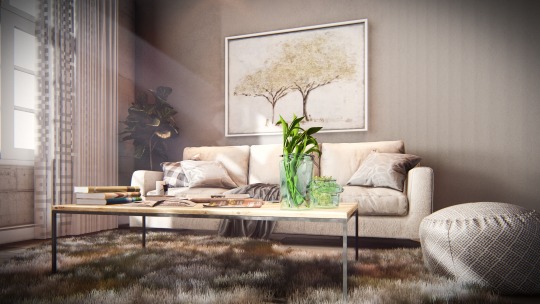

- #How long should it take for brighter 3d to render a scene how to
- #How long should it take for brighter 3d to render a scene software
If you are working with a real-time engine like Unity or Unreal and you do not have all the post processing options in the same manner as the ones used in VFX, the following procedures can at least make you better understand what tools and effects you can add or if you need to develop a certain effect to make something render differently in real time.īefore getting involved with professional work, I had the preconceived notion, that all the big VFX studios had some very sophisticated tools to be able to generate their beautiful final footage, it then turned out they had some fancy infrastructure and software to handle the volume of work they do but the results they were getting had a lot more to do with good craftsmanship more than anything else. There is always a premium for doing things on the fly. In addition, doing those effects in post is a lot faster and gives you more control than having to do them all “correctly” in render settings.
#How long should it take for brighter 3d to render a scene how to
Now, what’s wrong with my renders? you might be asking! if I don't need any compositing layers to add or replace, if only I get the lighting and materials right couldn't I just use the renders as they are? Absolutely, if you are happy with your 3D render or your client is happy with it, then there is no need to spend more time working on an image, in addition your 3D application might produce the needed tone mapping and have built-in features that produce some of these post-processing effects.īut the following written piece will help you understand the settings you see inside your render engine or how to get that extra quality you see in other high-end renders and photographs or even how to better replicate human vision if you are building something for virtual reality. You might find it helpful to check my other blog: “Understanding Digital Images” Those are subjective terms and have been used to convey an idea, you may very well need to implement these same techniques to make an artistic style of your renders or to simply match sequences.

I used the terms “improve”, “realistic” and “photographic”. Please note that this article assumes, you are using 32 bit/channel renders as in EXRs and that you have an understanding of linear workflow and dynamic range. If you are simulating a virtual reality experience, then you might have to add a different set of effects that make your renders closer to human vision.

A realistic image in this sense means actually photographic. The first few techniques such as denoising, improving lighting and tone mapping are more about getting the best out of your 3D renders to have a strong foundation to work with, and then sharpening it and adding camera artifacts should take away some of its digital look away to make it appear as if it were coming out of a camera. This article should also make it easy to understand why certain effects make an image look more realistic or aesthetically pleasing, and give you a somewhat standardized way to tackle 3D renders. Writing this tutorial I am trying to share some of the ways I implement to improve my renders, laid out in simple principles to grasp and drawing on experience from compositing my own 3D renders. Although it's a given that post processing CG renders will include layering, adding and/or replacing elements inside the frame. While the meaning of the word compositing still rings very true for visual effects work that includes live footage integration I think you might consider the title: "Improving 3D renders in Post Processing" instead of “CG compositing” to be more fitting for this article. Latin origin of "Compositing": to put together. This article is closely related to this video: In this article we will classify effects you could use to improve 3D renders into these categories: And to also make the workflow of a compositor who is already familiar with these techniques, more concise and organized in handling 3D renders. It is instead concerned with the fundamentals of how to improve your CG images by applying certain effects. This is not a step by a step tutorial on how to composite a 3D render in a particular software. It will categorize the procedures and effects you could use to make your renders more “realistic” and take away that distinctive CG look you get from a 3D render engine. This article will examine how you can improve your 3D renders in post processing using a photo editing or compositing software.


 0 kommentar(er)
0 kommentar(er)
